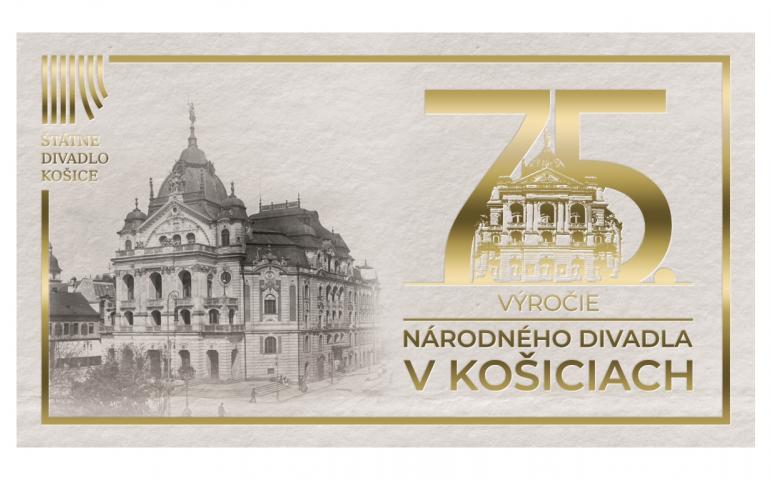National Theatre – Historical and Present-day Concept
May 1, 2022 – the 75th anniversary of the National Theatre Košice
Historically, national theatres were scenes dedicated to the artworks of national character, performing in local languages. They appear from late 18th Century. National theatres were designed to bridge the gap between court and folk theatres. Identification with local language was more important than estates or nationality.
The idea of national theatres originated in Germany, mostly established by Friedrich Schlegel and Friedrich Schiller. Yet before the unification of fragmented Germany, the idea was to produce music in German language, cultivate audience by means of German plays and operas as a counterbalance to the drama and opera pieces of French and Italian production that were then popular in aristocratic circles. They did not effort for a single representative National Theatre in Germany. Some national theatres ceased to exist, such as Hamburg, Vienna, some operate up to the present-day – Nationaltheater Mannheim, Nationaltheater Weimar, Nationaltheater München (today Bavarian State Opera).
Slavic and other eastern European nations, which did not have own state, faced a different situation in the 19th Century. Their efforts for a national theatre, or national theatres, run in the parallel with their political efforts and struggle for national identity and freedom. In this context, difference must be drawn between national theatres (ensembles) and national theatres (institutions and/or buildings). In 19th Century, national theatres were established in Warsaw, Budapest, Bucharest, Belgrade, Prague, Zagreb, and Ljubljana, etc.
The first Slovak theatre labelled as National Theatre was Slovak National Theatre of Nitra in Sobotište that was established by Ľudovít Štúr and his followers. The theatre laid foundations for other Slovak amateur theatres.
In 1918, following the foundation of the 1st Czechoslovak Republic, situation in Slovakia was a bit different. Until then, Slovaks had no professional theatre ensemble, and so the ensemble was built up following the model of Czech professional theatre with direct support by Czech actors. The Slovak National Theatre in Bratislava was established in 1920 and Eastern Slovak National Theatre in Košice in 1924. The theatres originated in the two biggest Slovak towns. Most residents and cultural audience were not Slovak. The then opera houses were established by Hungarians - Városi színház (Municipal Theatre) in Bratislava and Nemzeti színház (already then National Theatre) in Košice.
Horthy’s occupation (1938 – 1945) interrupted operation of the theatre; Eastern Slovak National Theatre in Košice was reopened later. From 1947, it is labelled as the National Theatre Košice.
Janko Borodáč (the then director of the theatre) had the ambition, taking into regard its historical context, to run the theatre as a full-fledged national theatre, rather than a regional scene.
In 1955 - the period of brutal Communistic centralisation (in Slovakia takes the form of suppression of bourgeois nationalism), the theatre was renamed as the State Theatre Košice. The name is used, with a short interruption in the 90s, up to the present day.
Please, note that in 1955 theatres were renamed into state theatres all over the country, in Brno, Ostrava. After the Velvet Revolution, they returned to original names – the National Theatre Brno in 1992 and the National Moravian-Silesian Theatre in 1995. These theatres shared similar historical development with the theatre in Bratislava and Košice. After the foundation of the 1st Czechoslovak Republic in 1918, they established themselves as national theatres though they were originally German theatres.
Neighbouring countries, that are culturally and historically close, have several national theatres at the same time: in Czechia - Prague, Brno, and Ostrava, in Hungary - Budapest, Miskolc, Győr, Pécs, and Szeged, in Croatia - Zagreb, Rijeka, Split, Varaždin, and Osijek, in Slovenia - Ljubljana, Maribor, and Nova Gorica, in Serbia – Belgrade, Novi Sad, in Rumania – Bucharest, Cluj, Jasy, Târgu Mureș, Timișoara, in Germany - Mannheim, Weimar, and Munich.
A brief historical excursion clearly indicates that the concept of National Theatre, in many countries, describes type and character of a theatre rather than the privilege to be the only and unique representative cultural scene of a nation. The way it is often, mistakenly, understood in Slovakia. In this context, national theatre is a living institution rather than mere museum artifact. It needs to prove its title by everyday work, especially by means of its artistic and social impact, developing national heritage, as well as confrontation with contemporary art and lates developments.
The theatres called 'National' gained their names due to the circumstances in which they originated, and the importance, attributed to them, for cultural life or common language community.
In this context, a great Czech philosopher Jan Patočka says: (in his work K ideji národního divadla – 1968): “Find historical, unique own relationship to universal things, without insisting that it is ours, specific, and unique. Without having the need to find it as such. This is the only authenticity, absolutely no boasting, loosing no esteem, pain, patience or negative things, refraining from any mannerism, i.e., any national kitsch. Cause kitsch is unmeant, but unmistakeable, sign of national and personal smallness of those who turn to it.“
PRESS RELEASES:
- 28. apríla 2022 - Oslavy 75. výročia Národného divadla v Košiciach otvorí tanečná dráma ORBIS PICTUS
- 25. apríla 2022 - Štyri májové premiéry k 75. výročiu vzniku Národného divadla v Košiciach
WROTE ABOUT the 75th anniversary of the National Theatre Košice:
- 2.6.2022 - Týždenník TREND - Štátne či národné?
- 25.5.2022 - trend.sk - Komunisti mu zobrali titul „národné“. Košické divadlo ho chce naspäť, čaká sa na ministerstvo
- 9.5.2022 - rtvs.sk - Regina (75 rokov od vzniku Národného divadla v Košiciach)
- 7.5.2022 - pravda.sk - Štátne divadlo Košice uvádza v rámci osláv ďalšie dve premiéry
- 6.5.2022 - kosicednes.sk - Štátne divadlo Košice uvádza v rámci osláv ďalšie dve premiéry
- 5.5.2022 - dnesky.sk - Štátne divadlo Košice uvádza v rámci osláv ďalšie dve premiéry
- 5.5.2022 - teraz.sk - Štátne divadlo Košice uvádza v rámci osláv ďalšie dve premiéry
- 5.5.2022 - tasr.sk - Štátne divadlo Košice uvádza v rámci osláv ďalšie dve premiéry
- 4.5.2022 - mojakultura.sk - Tosca s výnimočným obsadením a jedinečnými kostýmami aj scénou
- 3.5.2022 - mojakultura.sk - Prvá májová premiéra už dnes v balete ŠDKE
- 3.5.2022 - mojakultura.sk - Národné divadlo ako pojem historický a súčasný
- 1.5.2022 - korzar.sme.sk - Napol Rusín, rodák z Prešova, nanovo postavil vydrancované košické divadlo
- 30.4.2022 - pravda.sk - Oslavy 75. výročia Národného divadla v Košiciach otvorí tanečná dráma Orbis Pictus
- 30.4.2022 - zivotpo.sk - Štátne divadlo oslávi 75. výročie od titulu národné štyrmi premiérami
- 29.4.2022 - pravda.sk - Oslavy 75. výročia Národného divadla v Košiciach otvorí tanečná dráma Orbis Pictus
- 29.4.2022 - Košický Večer (korzar.sme.sk) - Po vojne zostali len žiarovky v lustri. Vydrancované divadlo vzkriesil Janko Borodáč
- 29.4.2022 - kosicednes.sk - Oslavy 75. výročia Národného divadla v Košiciach otvorí tanečná dráma Orbis Pictus
- 29.4.2022 - teraz.sk - Štátne divadlo oslávi 75. výročie od titulu národné štyrmi premiérami
- 29.4.2022 - ahoj.tv - Národné divadlo v Košiciach oslávi 75. výročie ustanovenia
- 25.4.2022 - mojakultura.sk - Štyri májové premiéry k 75. výročiu vzniku Národného divadla v Košiciach

